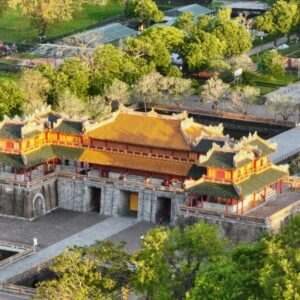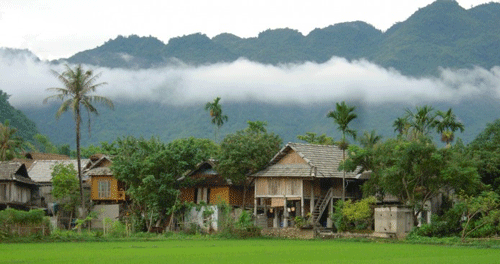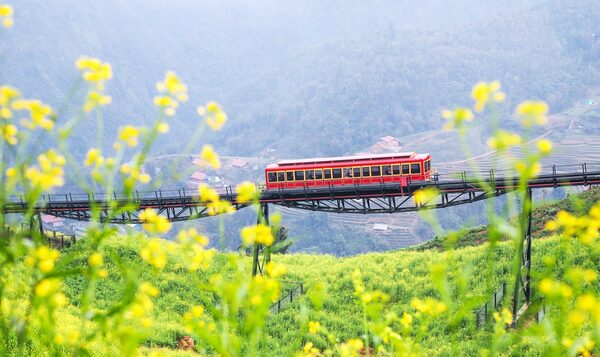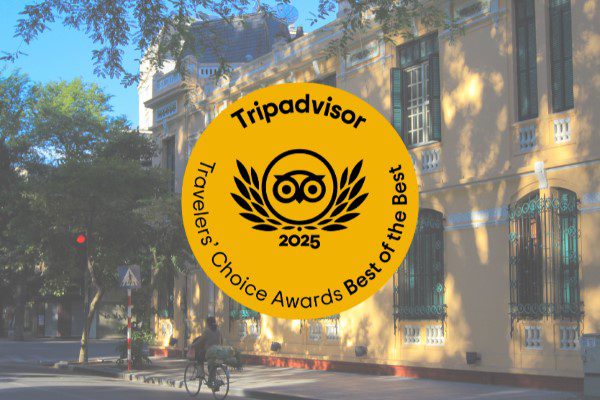Hue, the land of ancient imperial capitals of Vietnam, captivates visitors with its rich history, unique architecture, and distinct culinary culture.
Why Visit Hue? This picturesque city in central Vietnam is famous not only for its rich historical past but also for the refined beauty of its culture and ancient architecture. Nestled along the peaceful Perfume River, Hue was once the capital of the Nguyen dynasty, and it has become one of the favorite destinations for both local and international travelers.
For history, architecture, and food enthusiasts, Hue is an ideal destination. In this article, we will explore the reasons why visiting Hue is an unforgettable experience.
1. The Imperial City of Vietnam
Hue was the capital of Vietnam under the Nguyen dynasty from 1802 to 1945. The city is distinguished by its imposing architectural monuments and stunning palaces such as the Hue Citadel, where the Nguyen emperors lived and worked. A UNESCO World Heritage site, the Hue Citadel offers visitors a profound insight into the history and culture of Vietnam’s last feudal dynasty. A walk along the imposing walls, a visit to the Imperial City, the Thai Hoa Palace, and the tombs of the Nguyen emperors transports visitors to a glorious time in history.
In particular, the peaceful atmosphere seems to be well preserved, as if it has existed eternally within the city. Tranquil but not at all gloomy, the splendid beauty of the palaces will impress you while the serene landscapes allow you to find calm.
2. The Most Original Military Construction
A perfect harmony between Eastern philosophical designs, Vietnamese architectural rules, and inspiration from Western military structures. The complex was built under the reign of Kings Gia Long and Minh Mang, situated on the northern bank of the Perfume River, with a facade facing south. From the choice of location to construction rules, all favor the strategic aspect of the city.
3. Majestic temples and serene pagodas
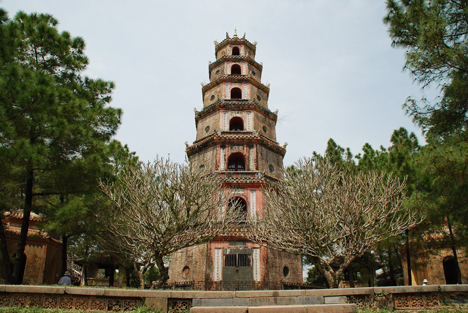
Thien Mu Pagoda – Hue
Why visit Hue? Hue is not only famous for its imperial monuments but also for its many ancient and majestic pagodas. One of the most famous is Thien Mu Pagoda, perched on a hill overlooking the Perfume River. Built in 1601, this pagoda offers a peaceful and spiritual setting, a must-see for those wishing to learn more about Vietnamese Buddhism. Other pagodas, such as Tu Dam Pagoda and Huyen Khong Pagoda, are ideal places to feel the tranquility of the ancient capital.
4. Unique Architecture and Rich History
The sumptuous monuments like the tomb of Minh Mang, the tomb of Khai Dinh, and the tomb of Tu Duc are not only testaments to the talent of ancient artisans but also perfect examples of the fusion between traditional Vietnamese culture and Western architectural influences. Each tomb possesses its own architectural style, ranging from the elegant simplicity of the tomb of Tu Duc to the opulence of the tomb of Khai Dinh. Visiting these tombs allows visitors to better understand the lives of the Nguyen emperors as well as the evolution of art and architecture over the centuries.
5. Country’s royal past
Located within the inner citadel, the Royal Antiquities Museum of Hue was founded in 1923 in Vietnam under the initial name Khai Dinh Museum. In 1993, after five name changes, it was officially named its current name.
6. A Unique Culture and Art
Why visit Hue? Hue is also a distinctive cultural and artistic center of Vietnam. Visitors can attend Nha nhac cung dinh Hue performances, a form of traditional music recognized as an intangible cultural heritage by UNESCO. Furthermore, Hue is known for its traditional craft villages, such as conical hat making, incense production, and wood carving. By visiting these villages, travelers can not only observe the artisanal manufacturing processes but also purchase delicate artworks as souvenirs.
Read More: Hue Festival– The Spectacular Celebration Not to Be Missed in Vietnam

Hue Ao Dai Festival: “Stories told from the river” – One of the highlights of the autumn activities series of the Hue Festival 2023.
7. A Peaceful and Poetic Nature
In addition to its cultural heritage, Hue enchants with its natural beauty. The Perfume River, gently flowing through the city, brings inner peace to residents and visitors alike. The green hills surrounding the city, along with the pristine beaches of Thuan An and Lang Co, are perfect spots for those seeking a haven of relaxation. With its fresh air and grand landscapes, Hue is an ideal destination for recharging in nature after busy days.
8. Royal cuisine
Why visit Hue? For food lovers, Hue is a true paradise with many unique and delicious dishes. The cuisine of Hue is renowned not only for its rich flavors but also for the care taken in the preparation and presentation of dishes. Delicacies such as banh beo, banh nam, banh bot loc, and rice with corbicula embody the essence of imperial culinary culture. In particular, Hue beef vermicelli, with its distinctive spicy flavor, has become an iconic symbol of Hue cuisine that you shouldn’t miss during your visit.
Read More: 5 Must-try Foods When You Visit Hue
9. Boat Concert on the Perfume River
A distinguished leisure activity that everyone would love to savor when visiting Hue, Vietnam. Under the wonderful moonlight and candlelight along the banks, the spectacle becomes more magnificent than ever! A tour between Phu Van Lau and Trang Tien allows you to better discover the cultural and historical richness of the kings’ territory.
Tips for Visiting Hue
When to Visit?
The ideal time to visit Hue is from January to August, when the weather is dry and pleasant. During this period, visitors can explore the city without worrying about the weather.
If you prefer a cooler atmosphere, autumn, from September to November, is also an excellent time to enjoy the mildness of Hue. However, this is also when Hue is prone to storms and heavy rain, so visitors should keep this in mind.
Read More: Rainy season in Vietnam and things to note during the trip
How to Get There?
From Hanoi or Ho Chi Minh City, you can easily reach Hue by plane, train, or bus. Regular domestic flights serve Phu Bai Airport, while those who enjoy scenic views can opt for the train, which offers spectacular coastal scenery.
Must-See Sites
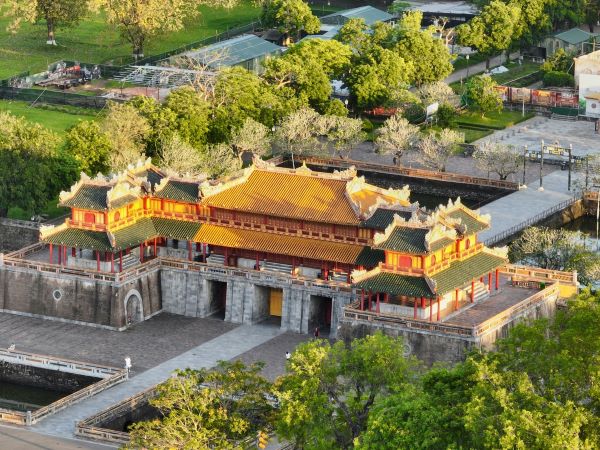
Hue Citadel
- Hue Citadel: Built in the early 19th century under the Nguyen dynasty, it consists of three main enclosures: the Imperial City, the Forbidden City, and the Great Enclosure. Visitors can discover iconic monuments such as the Ngo Mon Gate, the Thai Hoa Palace, and many temples and tombs. The architecture here is a harmonious blend of traditional Eastern culture and Western influences.
- Tomb of Minh Mang: Located about 12 km from the center, this tomb is famous for its harmony between nature and architecture, a peaceful place reflecting the spirit of King Minh Mang.
- Tomb of Khai Dinh: Known for its style blending Vietnamese tradition and Western modernity, this tomb impresses with its luxury, imported materials, and frescoes.
- Thien Mu Pagoda: Perched on a hill, it overlooks the Perfume River. Its imposing seven-story tower is one of Hue’s most recognizable symbols.
- Perfume River and Trang Tien Bridge: A cruise on the Perfume River, accompanied by traditional music, offers an unforgettable experience. The Trang Tien Bridge, illuminated at night, is also a perfect spot for photos.
- Thuan An and Lang Co Beaches: After a cultural visit, these beaches offer a haven of peace with their white sand and crystal-clear waters, perfect for relaxation.
Read More:
- An Dinh Palace Vietnam: A Timeless Jewel of Hue’s Imperial Legacy
- Kien Trung Palace in Vietnam: Splendid Hue Beauty reopens
What to Eat in Hue?
- Hue Beef Vermicelli (Bun bo Hue): This iconic dish combines noodles, beef, pork shank, and a spicy soup, prepared with local ingredients such as shrimp paste.
- Rice with Corbicula (Com hen): This simple yet tasty dish mixes cold rice and sautéed small clams, accompanied by vegetables, peanuts, and fermented shrimp sauce.
- Banh beo, banh nam, banh bot loc: These small rice dishes are popular specialties served with shrimp and meat toppings, accompanied by spicy sauces.
- Che Hue: A sweet dessert with a wide variety of ingredients, such as beans, candied fruits, and even roasted pork for the more adventurous.
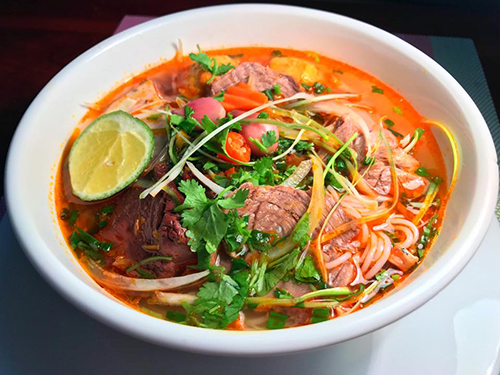
Bun bo Hue (Vietnamese spicy rice noodle soup)
Why Visit Hue? Hue is a fascinating destination, not only for its rich historical past but also for the beauty of its culture, architecture, and unique cuisine. With varied experiences, from visiting historical monuments to tasting refined dishes, Hue is sure to provide unforgettable memories for travelers.
If you’re looking for an exciting and meaningful journey, let Paradise Travel accompany you in discovering the ancient imperial capital of Hue. Contact us now to plan your memorable trip!

